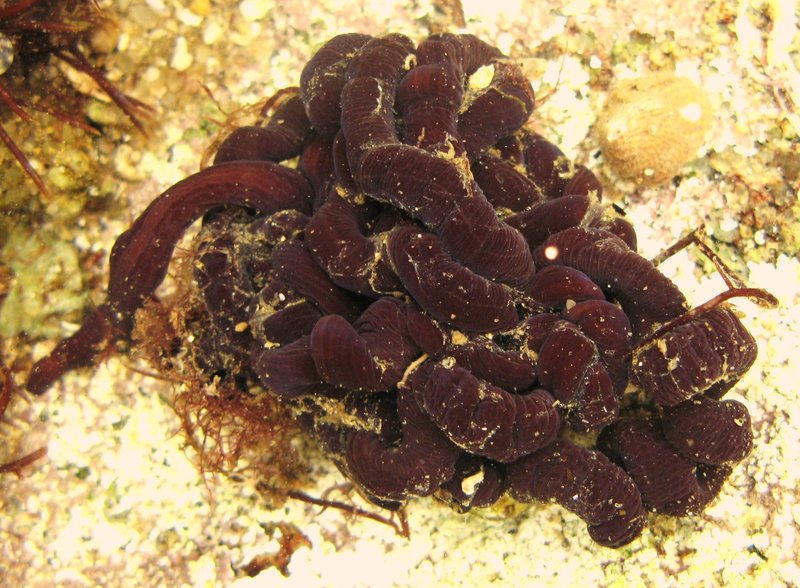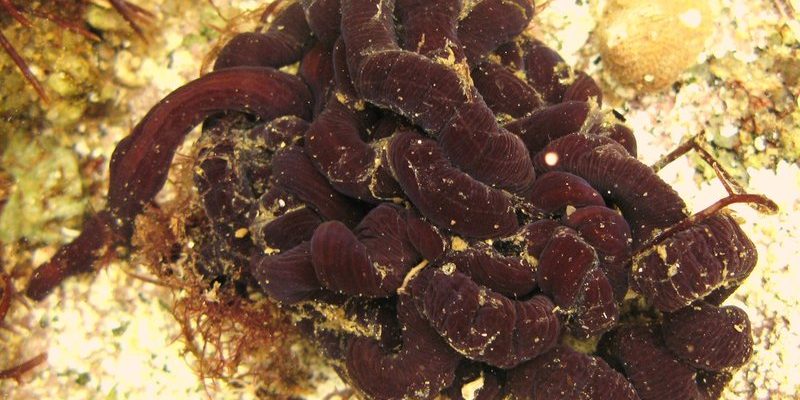
Imagine a hidden world beneath the waves, where these worms glide along the rocky seafloor, bringing a unique kind of life to their surroundings. Their ability to adapt and thrive in such challenging habitats showcases nature’s creativity. So, what drives bootlace worm behavior in these rugged environments? Let’s dive in and explore what makes them tick.
What Are Bootlace Worms?
Bootlace worms are part of the phylum Annelida, which means they’re segmented worms, closely related to earthworms. However, these guys are far from ordinary. They can grow to astounding lengths—some reports claim they can reach up to 60 meters! That’s longer than a blue whale! Their bodies are made up of many segments, each filled with tiny bristles that help them move through water and across rocky surfaces.
These worms are typically found in shallow coastal areas, primarily in Europe, including the British Isles. Their long, ribbon-like bodies can often be spotted gliding over rocks or curling into tight spirals. When you see one, it might remind you of a living piece of spaghetti, but they play an important role in their ecosystem by breaking down organic matter and serving as a food source for various predators.
Habitat Preferences
Bootlace worms have a knack for choosing the right spots to call home. You’ll often find them in rocky shorelines, where they seek shelter in the cracks and crevices. Why is that? Well, rocky environments provide them with protection from harsh waves and predators, allowing them to thrive.
These worms also prefer areas with ample food sources, such as detritus and microorganisms that help them sustain their diet. They’re not picky eaters; they consume a variety of organic materials that accumulate on the seafloor. Their ability to adapt to different substrates—like sandy or muddy bottoms—also means they can survive in various conditions, which is quite impressive.
Movement Habits
One of the most mesmerizing aspects of bootlace worm behavior is their unique method of movement. Instead of swimming like a fish or crawling like a snail, they undulate their long bodies in a wave-like motion. This graceful movement helps them navigate through rocky crevices and allows them to hunt for food.
When they’re disturbed—say by a curious diver or a wave crashing against the rocks—bootlace worms can also quickly retract into their hiding spots, wrapping themselves up tightly. This behavior is a natural defense mechanism to avoid getting eaten or damaged. You might think of it as them pulling a quick disappearing act!
Reproduction and Life Cycle
Let’s talk about how bootlace worms keep their species going. Their reproduction process is quite fascinating. Most bootlace worms are hermaphroditic, meaning each worm has both male and female reproductive organs. During mating, two worms will come together, exchanging sperm to fertilize their eggs.
Once fertilized, the eggs develop into larvae that drift in the water before eventually settling on the seafloor. This breathing period helps the young worms find new habitats, often far away from their parents. It’s kind of like a rite of passage, where the next generation gets to explore the vast ocean before finding a cozy rocky home.
Interactions with Other Marine Life
Bootlace worms have various relationships with other marine creatures, some friendly and some not so much. They serve as important prey for animals like fish and seabirds. In this way, they contribute to the food web, nourishing larger species and maintaining ecological balance.
On the flip side, bootlace worms can also be impacted by human activities. Pollution and habitat destruction threaten their survival, making it crucial for us to protect coastal environments. Engaging in responsible boating, fishing, and beach cleanups can help preserve their habitats, ensuring these remarkable creatures continue to thrive.
Adaptations for Survival
Bootlace worms are equipped with several adaptations that enhance their survival in rocky shorelines. Their flexible bodies allow them to squeeze into tight spaces, while their skin is covered in a mucous layer that protects them from predators and environmental stressors.
Moreover, they have the ability to regenerate lost segments. If a predator nips off a part of their body, they can grow it back over time. This remarkable capability not only gives them a fighting chance but also showcases the resilience of life in challenging environments.
In Conclusion
Bootlace worms may not be the most glamorous creatures in the marine world, but they play a vital role in our coastal ecosystems. Their unique behaviors, impressive adaptations, and interactions with other marine life illustrate the complexity of life beneath the waves. By learning about these fascinating worms and their habitats, we can better appreciate the delicate balance of our oceans.
So, the next time you stroll along a rocky shoreline, take a moment to consider the bootlace worm. They may just be the unsung heroes of the coast, silently going about their business while contributing to the beauty of the marine world. Let’s keep our shorelines clean and vibrant to ensure they—and many other marine creatures—continue to thrive for years to come.

